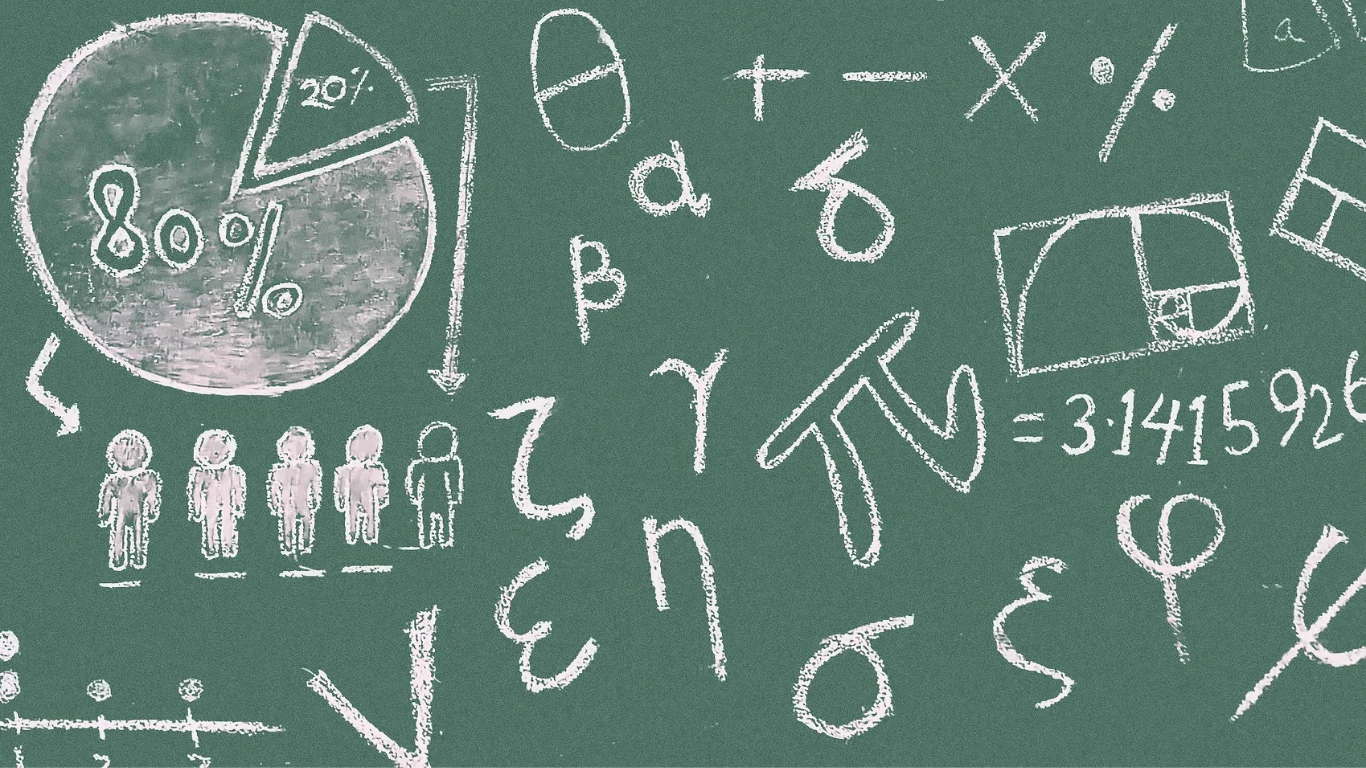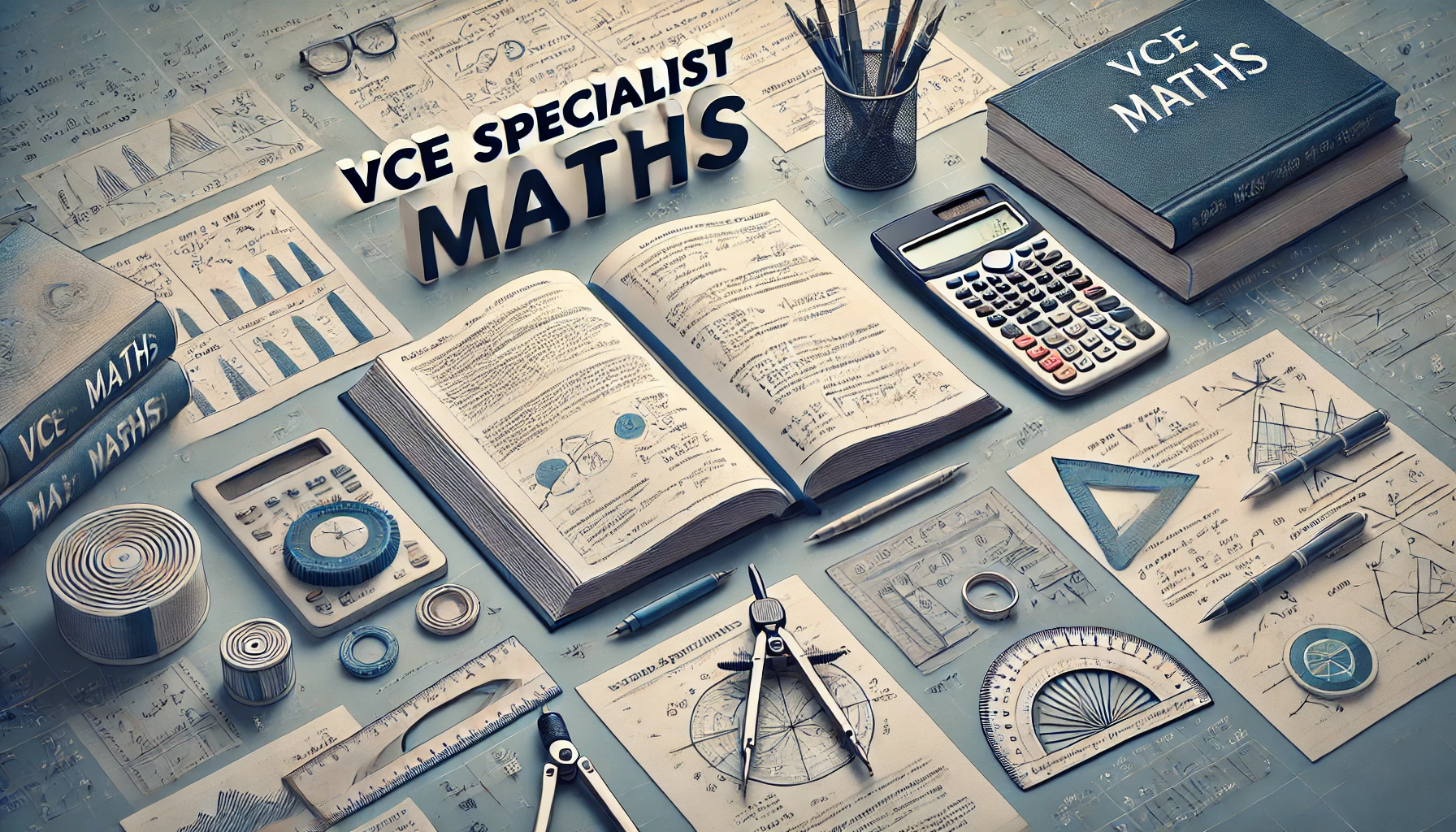
The VCE Mathematical Methods external assessment consists of two separate examinations, each designed to test different skill sets and mathematical approaches.
While Paper 1 focuses on algebraic manipulation and problem-solving without technology, Paper 2 allows students to use a CAS calculator to tackle more complex problems efficiently. Understanding these differences is crucial for exam preparation, as it helps students develop the right strategies ****for each paper.
Below is a comparative table outlining their structure, content focus, and key differences.
Structure and Differences Between VCE Maths Methods Exams
Exam Breakdown
- Paper 1 (Non-Calculator) assesses students' ability to work through problems manually, demonstrating algebraic manipulation, logical reasoning, and procedural fluency without technology.
- Paper 2 (Calculator-Allowed) allows students to use CAS calculators to solve more complex problems involving real-world applications, statistical analysis, and optimisation.
💡Explore the four toughest Maths Methods topics with tips and practice questions to master them!
Question Breakdown for VCE Maths Methods Examination 1
Understanding the exam structure and mark distribution is essential for students preparing for VCE Mathematical Methods Examination 1. This section provides a detailed mapping of each question to its relevant syllabus topic, highlighting the key areas assessed. Additionally, the table includes the mark distribution for each question, reflecting student performance and common pitfalls. This information can help students prioritise their revision by focusing on areas where performance was weaker.
The table below presents a breakdown of each question, its syllabus alignment, and how students performed:
Key Takeaways from the Examiner's Report
- Strongest Performance:
- Questions 5a, 7b.i, and 1a had the highest percentage of full-mark responses, suggesting that differentiation and simple rate problems were well understood.
- Most Challenging Questions:
- Questions 7b.ii, 7b.iii, 8d, and 5b were among the most difficult, with a large proportion of students scoring zero marks. These questions required a deeper conceptual understanding of functions, verification of stationary points, and transformation of functions.
- Questions 7b.ii, 7b.iii, 8d, and 5b were among the most difficult, with a large proportion of students scoring zero marks. These questions required a deeper conceptual understanding of functions, verification of stationary points, and transformation of functions.
💡Exams are a super important part to any student's journey. Ace your exams with confidence following these 10 detailed tips!
Key takeaways from Maths Methods Examination 1 in 2024
Success in VCE Mathematical Methods requires not only a strong understanding of mathematical concepts but also careful attention to exam technique. The 2024 examination report highlighted several key areas that students should focus on to improve their performance. This section provides an overview of essential skills, examiner advice, and common mistakes that students made in the 2024 exam.
Key Skills to Focus on
- Algebraic Manipulation – Accuracy in factorisation, expanding, and simplifying expressions is crucial, especially when solving equations or rearranging formulas.
- Differentiation & Integration Techniques – Understanding when and how to apply product rule, chain rule, quotient rule, and integration methods is fundamental.
- Graph Sketching & Interpretation – Students need to accurately sketch, label, and interpret graphs, particularly for functions and their derivatives.
- Probability & Statistics – Correct application of binomial probability, standard deviation calculations, and probability density functions is essential.
- Mathematical Notation & Clarity – Using correct function notation, intervals, brackets, and logical structuring ensures answers are clear and unambiguous.
Advice to Students
Strong exam technique and mathematical precision are key to success in VCE Mathematical Methods. The 2024 examiner report provides important insights into best practices for answering questions effectively. Below is a detailed summary of the examiner’s advice, covering key areas such as presentation, notation, and reasoning.
Presentation & Clarity
- Write Clearly & Legibly – Exam responses are digitally scanned, so students must use dark ink (black or blue pen) or a 2B pencil to ensure visibility. This is particularly important for graphs and equations.
- Neatly Organise Working & Final Answers – Working should be logically set out and final answers clearly identifiable. If multiple conflicting answers are provided, full marks cannot be awarded.
- Graph Sketching with Care – Graphs should be drawn smoothly and clearly, ensuring correct labelling of axes, asymptotes, intercepts, and key points. The grid should be used to maintain accuracy.
- Use Pencil for Graphs & Erase Unintended Sketches – Any unnecessary markings should be thoroughly erased to avoid confusion.
Notation & Mathematical Accuracy
- Use Brackets & Correct Notation – Many errors resulted from missing brackets, incorrect notation, or ambiguous formatting, particularly in integrals, fractions, and function notation.
- Mathematical Nomenclature Matters – Students must use the names of functions as given in the question. If a function is defined as g(x), it is incorrect to refer to it as f′(x) or y=.
- Brackets & Vinculums in Fractions – Brackets must be used in algebra to eliminate ambiguity and maintain the correct order of operations. Vinculums in fractions must extend over the entire denominator.
- Correct Use of Mathematical Symbols – dx must be included in integrals, and radicals must fully extend over the radicand or be enclosed in brackets.
Reasoning & Justification
- Show Full Working for Multi-Mark Questions – Students must clearly demonstrate reasoning in questions worth multiple marks. Simply providing an answer, without justification, will not receive full credit.
- Practise ‘Show That’ Questions – Many students lost marks due to insufficient working in verification problems. These require detailed algebraic steps, not just a final answer.
- Correct Use of Mathematical Terminology – Command words such as "hence," "verify," and "show that" have precise meanings. Misinterpreting these can result in incorrect methods being applied.
- Answer the Full Question – Students should re-read questions after answering to ensure all required parts have been addressed. Some lost marks by omitting key elements, such as domain restrictions or final justifications.
- Transformation Language Must Be Correct – When describing transformations, students must use the correct expressions. For example, dilations should be described as "parallel to an axis" or "from an axis" instead of vague descriptions.
💡Check out why past papers are the best way to study for exams!

Common Mistakes
Algebra & Calculus Errors
- Misapplying differentiation rules – In product rule and chain rule questions, many students forgot to apply correct differentiation steps.
- Incorrectly setting up integrals – Some students misinterpreted limits or failed to include dx in integral expressions.
Graphing Issues
- Poorly labelled graphs – Many students did not clearly label axes, intercepts, or asymptotes, leading to marks being deducted.
- Incorrect sketches of derivative graphs – Some students confused derivative graphs with the original function, leading to incorrect interpretations.
💡Take notes efficiently and effectively using these tips!
Probability & Statistics Misconceptions
- Errors in binomial probability calculations – Some students miscalculated probabilities due to incorrect expansion of binomial terms.
- Standard deviation mistakes – Many incorrectly applied the standard deviation formula, confusing variance and standard deviation values.
Exam Technique Issues
- Not simplifying final answers – Some students lost marks by leaving answers in an unsimplified form or missing negative signs.
- Lack of justification in reasoning questions – For verification questions, many students did not provide a complete mathematical argument, leading to partial marks.
Question Breakdown for VCE Maths Methods Examination 2
In VCE Mathematical Methods Examination 2, students are allowed to use a CAS calculator, which means questions often test a combination of manual problem-solving skills and technological proficiency. Understanding which topics were assessed and how students performed in each section can help in identifying strengths and weaknesses.
The table below provides a detailed breakdown of each question, its syllabus alignment, and the percentage of students who received 0, 1, 2, or 3 marks.
Key Observations from the Examiner’s Report
- Strongest Performance:
- Questions 1c.i, 2c.i, and 4b.i had the highest percentage of students receiving full marks, indicating that differentiation and integral setup were well understood.
- Most Challenging Questions:
- Questions 1d.ii, 5d, and 4c.ii had the highest proportion of students scoring zero marks, suggesting difficulty with transformations, domain/range, and probability-based calculations.
- Errors in Technology Use:
- Some students struggled with CAS calculator functionality, particularly when solving for variables, evaluating definite integrals, or working with binomial probabilities.
Key takeaways from Maths Methods Examination 2 in 2024
The VCE Mathematical Methods Examination 2 presents a unique challenge as it allows students to use a CAS calculator, making it essential to strike a balance between manual problem-solving skills and effective technology use. The 2024 examination report highlighted several key areas where students excelled, as well as those requiring improvement.
This section provides an overview of essential skills, examiner advice, and common mistakes to help students refine their preparation for future exams.
Key Skills to Focus on
- Effective Use of CAS Calculators – Understanding when and how to use CAS functions for algebraic manipulations, solving equations, and evaluating definite integrals can save time and reduce errors.
- Transformations of Graphs – Students need to correctly apply translations, dilations, and reflections in the correct sequence, as many struggled with this in 2024.
- Calculus Applications – Mastery of differentiation and integration techniques, including chain rule, product rule, and definite integrals, is essential.
- Probability & Statistics – Topics such as conditional probability, binomial distributions, and confidence intervals continue to be challenging for students.
- Mathematical Notation & Accuracy – Precise use of interval notation, brackets, and rounding conventions is crucial to avoid losing marks due to formatting issues.
- Logical Structure in Multi-Step Problems – Clearly laying out step-by-step reasoning is essential, particularly in "show that" questions, where many students lost marks due to missing justification.
💡As students, we juggle assignments, exams, and more, often cramming last-minute. Let’s explore how effective habits can transform our academic journey!

Advice to Students
Strong exam technique and mathematical precision are key to success in VCE Mathematical Methods. The 2024 examiner report provides important insights into best practices for answering questions effectively. Below is a detailed summary of the examiner’s advice, covering key areas such as presentation, notation, and reasoning.
Presentation & Clarity
- Ensure Answers Are Exact Unless Stated Otherwise – Several students lost marks for providing decimal approximations instead of exact values in questions like 1c.ii, 1d.i, 2f.ii, 5b.iii, and 5b.iv.
- Write Clearly & Legibly – Exam responses are digitally scanned, so students must use dark ink (black or blue pen) or a 2B pencil to ensure visibility. This is particularly important for graphs and equations.
- Neatly Organise Working & Final Answers – Working should be logically set out, and final answers clearly identifiable. If multiple conflicting answers are provided, full marks cannot be awarded.
- Use Pencil for Graphs & Erase Unintended Sketches – Any unnecessary markings should be thoroughly erased to avoid confusion.
- Show Full Working for Multi-Mark Questions – Marks were lost in 2f.iii, 3a, and 4b.ii because students only wrote a final answer without demonstrating their working steps.
Notation & Mathematical Accuracy
- Use Brackets & Correct Notation – Many errors resulted from missing brackets, incorrect notation, or ambiguous formatting, particularly in integrals, fractions, and function notation.
- Use Interval Notation Correctly – Some students reversed the order of values or used incorrect brackets in 5a.ii and 5b.iv, leading to unnecessary mistakes. Square brackets were sometimes used instead of round brackets, and vice versa, in 1c.iii, 5a.ii, and 5b.iv.
- Write Coordinates and Notation Clearly – Several students omitted brackets or used incorrect notation when writing points, particularly in 3b. Round brackets must be placed around coordinates, and all brackets should be fully closed.
- Brackets & Vinculums in Fractions – Brackets must be used in algebra to eliminate ambiguity and maintain the correct order of operations. Vinculums in fractions must extend over the entire denominator.
- Mathematical Nomenclature Matters – Students must use the names of functions as given in the question. If a function is defined as g(x), it is incorrect to refer to it as f′(x) or y=.
- Correct Use of Mathematical Symbols – dx must be included in integrals, and radicals must fully extend over the radicand or be enclosed in brackets.
Graphing & Transformation Errors
- Check Graph Sketching Requirements – Graphs should be accurate, labelled correctly, and demonstrate key features, such as intercepts, asymptotes, and symmetry. The grid should be used for accuracy.
- More Care Needed in Sketching Graphs – The examiner report highlighted positioning errors with endpoints and turning points in 3b.i. Many students also left asymptotes unlabeled or incorrectly positioned.
- Use Correct Transformation Language – Many students correctly identified horizontal translations but missed vertical translations in 1d.i. Similarly, transformations in 1d.ii and 3a.ii were not well answered.
- Single Definite Integral for Area Calculations – Many students in 5c.i incorrectly set up two separate definite integrals instead of one.
Reasoning & Justification
- Practise ‘Show That’ Questions – Many students did not provide sufficient steps to demonstrate their reasoning, particularly in 2f.i, 4c.i, and 5b.ii. These questions require clear algebraic working, not just a final answer.
- Check That You Are Answering the Question Asked – Some students calculated the wrong quantity in 2b, 3a.i, and 3b.iv, such as finding a function value instead of a rate of change.
- Re-read Questions to Ensure All Required Parts Are Answered – For example, in 3a.i, the value of d was often missing, and in 3b.iv, the maximum instantaneous rate of change was not provided by some students.
- Show Full Working in Multi-Step Problems – Some students misinterpreted calculus-based questions, such as 2f.ii, 2f.iii, and 3a.i, and failed to properly demonstrate all steps.
Use of CAS Calculators & Technology
- Use CAS Calculators Wisely – While technology was used effectively in 1, 3a.i, and 4e.i, some students made errors in calculator inputs when solving integrals or probability distributions.
- Transcription Errors from CAS Calculations – In 3b.iii and 5b.i, transcription errors led to incorrect derivatives, which cost students valuable marks. Some students also omitted π in expressions.
- Avoid Using Normal Approximation When Not Required – Many students incorrectly applied the normal approximation instead of using the binomial distribution in 4d.i and 4d.ii.
- Probability Tree Diagram Errors – Some students attempted to use tree diagrams in 4c.ii but struggled to find the correct values.
💡Check out these scientifically proven strategies to improve how you study!

Common Mistakes
Algebra, Calculus & Graph Transformations Errors
- Incorrect function transformations – Many students correctly identified a horizontal translation but missed the vertical translation in 1d.i.
- Misapplying integration techniques – In 4a and 5c.i, some students set up two separate integrals instead of one, leading to incorrect answers.
- Errors in differentiation – Some students miswrote their derivatives when applying the product or chain rule, particularly in 3b.iii and 5b.i.
Graphing & Interpretation Mistakes
- Incorrect sketching of transformed graphs – In 3a.ii, students often misinterpreted the transformation parameters.
- Failure to label graphs correctly – Some students left out axis labels, asymptotes, or turning points, which cost marks.
- Inaccurate representation of intervals – Students misused square and round brackets, especially in 5a.ii and 5b.iv.
Probability & Statistics Issues
- Confusing standard deviation with variance – In 4b.ii, several students found the variance instead of taking the square root for standard deviation.
- Misapplying conditional probability formulas – Many students incorrectly applied probability rules in 4c.ii.
- Errors in binomial probability calculations – Students struggled with correctly setting up Pr(Y ≥ 7) in 4d.i, often using normal approximations instead.
Exam Technique & Notation Issues
- Not fully answering "show that" questions – Many responses lacked clear algebraic justification in 2f.i and 5b.ii.
- Transcription errors from CAS calculations – Some students copied incorrect values from their calculator into their final answer.
- Missing domain/range restrictions – In 5d, many students did not properly check whether values were within the required domain.
Conclusion
Success in VCE Mathematical Methods requires a deep understanding of key mathematical concepts, strong exam technique, and effective use of CAS technology.
The most common mistakes—such as misinterpreting transformations, misusing interval notation, and not fully justifying answers in ‘show that’ questions—highlight the importance of attention to detail. Additionally, using CAS calculators effectively, checking for transcription errors, and practising past paper questions will greatly enhance performance.
Ultimately, students who take the time to refine their algebraic fluency, improve their problem-solving approach, and carefully structure their responses will be well-prepared for the Mathematical Methods exams. By learning from past mistakes and applying examiner advice, students can build confidence and maximise their final results.






